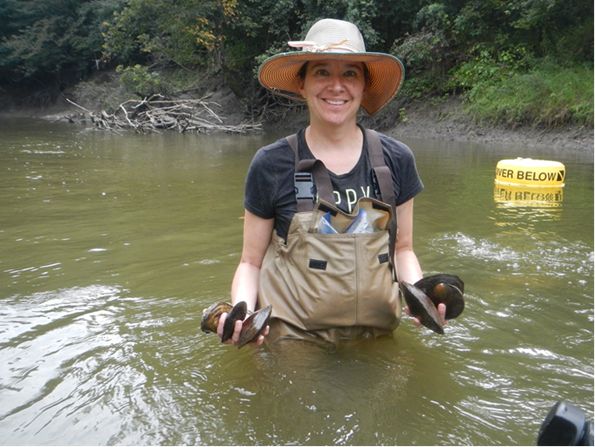I think of ecohydrology as the study of the interdependence of ecological and hydrological processes. Ecohydrolology accounts for some of the most common feedbacks in a natural system. For example, aquatic plants obstruct the movement of water in streams yet the movement of water also regulates plant growth by changing the supply of nutrients and, in turbid waters, the available light. I really enjoy thinking about positive and negative feedbacks between ecological and hydrological systems and how those might be either dampening or amplifying an external change that is imposed on the overall system.
What are your undergraduate and graduate degrees in?
As an undergraduate, I wanted to design cars to go faster (yeah, I know). To that end, my undergraduate degree is in Engineering and Applied Science from Caltech and my Master’s degree is in Mechanical Engineering from University of Michigan. After 7 years of working in industry, a year-long road trip around the USA and 2.5 years in Peace Corps, I had something of an epiphany regarding how I wanted to use my time and energy and changed direction from the mysteries of the internal combustion engine towards a much more complicated topic; the mysteries of the natural environment. Subsequently, my PhD is in Civil Engineering with an Ecology minor from University of Minnesota, advised by Jacques Finlay in Ecology and Miki Hondzo in Civil Engineering.
How did you arrive at working in/thinking about ecohydrology?
Just before beginning my doctorate program, I was living in Honduras as a U.S. Peace Corp volunteer. In this role, I worked with rural community drinking water organizations who were interested in improving the quality of their water and/or protecting their source watersheds. I was struck by the complete lack of financial resources that made the conventional methods to clean up water, which all have a relatively high associated cost, useless for them. At that time, I was thinking a lot about cheap ways to improve water quality and how poor water quality can impact all organisms, not just humans. I started getting interested in studying the role that vegetation plays in nutrient and contaminant cycling in river networks. It was interesting enough to me that when I returned to the U.S. I left my career in Mechanical Engineering behind to pursue a PhD.
What do you see as an important emerging area of ecohydrology?
The incorporation of aquatic ecology into water quality models. Aquatic vegetation, floodplain vegetation, and filter feeding organisms can all change hydrological conditions and water chemistry yet are seldom incorporated into water quality models. We represent microbial processes better! For example, filter feeding organisms such as freshwater mussels alter water quality by filtering out suspended particulates. In large enough numbers or in slow enough flow rates, mussels can have a measureable effect on water clarity. I think that experimental researchers recognize that interactions between hydrology and larger organisms can be significant but they are still not yet well incorporated into river network or watershed models.
Do you have a favorite ecohydrology paper? Describe/explain.
I really like the review paper by Catriona Hurd (2000), “Water motion, marine macroalgal physiology, and production”. This was the first paper I encountered that laid out the interdependencies between the hydrodynamics and the ecology of a system including implications for nutrient and carbon cycling, light availability, productivity and imposed environmental conditions on other dependent organisms within the kelp canopy. In addition, she described eco-hydro connections at a large range of spatial scales which shows how complex some of these questions can be.
What do you do for fun (apart from ecohydrology)?
I go outside and walk somewhere wild. I bring my binoculars and one of my kids and I see what I can see. Binoculars are great conversation starters – people often stop us and ask what we have seen! I also like to camp, swim, paddleboard and read.

 RSS Feed
RSS Feed